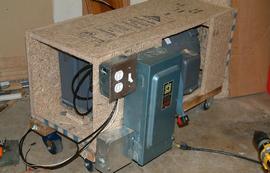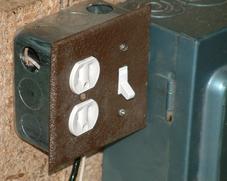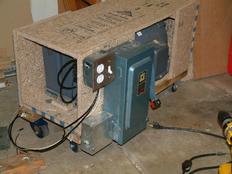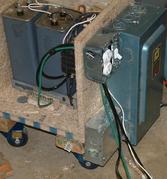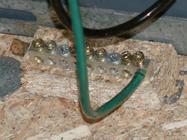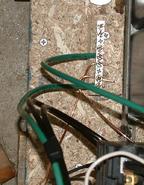 Up
Up
I spent one more evening finishing up the electrical system. I made sure that I have very solid ground. For that, I added a grounding terminal to my subpanel, and also inserted a length of solid copper wire into the incoming conduit for better contact. (I do not trust contact of conduit with the subpanel, too much).
I added a grounding terminal to the phase converter and terminated several grounds there: incoming ground, ground for the motor, for all electrical boxes, and outgoing ground are all connected in one block.
All screws on the contactor were tightened. Signal connections for the contactor were made with blade terminals. Everything was well screwed down with screws.
You can see that the input box (the top shiny electrical box with brown cover, outlets and switch) has the following: incoming wire, convenience outlets, and an on/off switch. The on/off switch does not turn the motor on: it is completely inadequate for this task. Instead, it turns the contactor on and off, and the contactor s rated for 75A, 10 HP at 240V.
The bottom electrical box is the output box and has a four terminal block: three legs (numbered 1-3 from bottom up) and the top terminal is for ground. I have a child at home and do not want to cause any trouble.
The heavy duty Square D disconnect switch, to the right of electrical input and output boxes, is for turning 3 phase output on and off. The idea for it is that it may be helpful to start my phase converter with no load first, and, once it starts, turn the disconnect on to power the load. I may put a combination lock on it to prevent my son from accidentally turning on 3 phase power and electrocuting himself.
I have not yet enclosed input wires into a flexible conduit.
